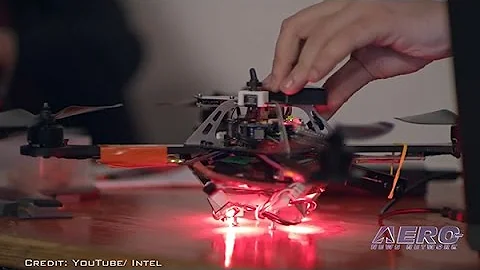Unveiling the Ultimate Device Experience: Intel AppUp Elements 2011
Table of Contents:
- Introduction
- The Ultimate Device Experience
- The Evolution of Mobile Devices
- The Fragmentation Problem
- The Rise of the Super Phone
- The Future of Mobile Devices
- The Importance of Software Development
- The Role of NFC in Mobile Devices
- The Need for Seamless Integration
- The Challenges of User Adoption
The Ultimate Device Experience
With the rapid evolution of mobile devices, we are constantly in search of the ultimate device experience. As tech enthusiasts, we carry multiple devices and are always on the lookout for the perfect combination of hardware and software. In this article, we will explore the challenges and possibilities of the ultimate device experience, including the impact of fragmentation, the rise of super phones, and the future of mobile devices.
The Evolution of Mobile Devices
Over the past decade, mobile devices have come a long way. From the early days of basic feature phones to the current era of smartphones and tablets, we have witnessed a significant transformation in the capabilities of these devices. The introduction of touch screens, advanced processors, and high-resolution displays has revolutionized the way we interact with technology.
However, the ultimate device experience is still elusive. Despite the advancements in hardware, there are still limitations in terms of form factor, weight, battery life, and display size. For tech-savvy users, carrying multiple devices has become the norm, as each device serves a specific purpose.
The Fragmentation Problem
One of the biggest challenges in achieving the ultimate device experience is fragmentation. With the multitude of platforms, operating systems, and device manufacturers in the market, developers face the daunting task of creating apps that work seamlessly across different devices. This fragmentation not only creates compatibility issues but also makes it difficult for users to find the apps that best suit their needs.
In the past, there were Talks of an all-in-one device that would combine the functionalities of a smartphone, tablet, and even a laptop. While we have seen glimpses of this concept with devices like the Motorola Atrix and the Asus Transformer, the reality is that we still carry multiple devices. The fragmentation problem persists, and developers need to find innovative solutions to bridge the divide.
The Rise of the Super Phone
As we move forward, the line between smartphones and tablets is starting to blur. The emergence of super phones with larger screens and more powerful processors is changing the way we perceive mobile devices. These super phones, or phablets, offer a more immersive experience, with a larger screen size that allows for better media consumption and multitasking.
With the impending arrival of quad-core devices, the smartphone market is set to be revolutionized once again. These super phones will not only compete with tablets in terms of performance but also in terms of mobility. As users Gravitate towards larger screen smartphones, developers need to focus their efforts on optimizing their apps for different form factors, particularly those between four and seven inches.
The Future of Mobile Devices
The ultimate device experience lies in the future. While it is impossible to predict exactly what the ultimate device will look like, there are certain trends that we can identify. Mobile devices will continue to get smaller, lighter, and more powerful. Battery life will improve, allowing for longer usage without the need for constant recharging.
The integration of NFC (Near Field Communication) technology is also expected to play a significant role in the future of mobile devices. NFC enables seamless communication between devices, opening up new possibilities for mobile payments, access control, and data transfer. As developers, understanding the potential of NFC and its implications for user experience is crucial in creating the ultimate device experience.
The Importance of Software Development
While hardware plays a crucial role in the ultimate device experience, software development is equally important. Developers have the power to enhance the usability, functionality, and overall experience of mobile devices through their apps. By focusing on user-centric design, developers can create apps that make users' lives easier and more enjoyable.
For the ultimate device experience, developers should prioritize features that improve productivity, connectivity, and entertainment. From better voice recognition and synchronization across devices to intuitive user interfaces and seamless integration with cloud services, software development holds the key to unlocking the true potential of mobile devices.
The Role of NFC in Mobile Devices
NFC technology has the potential to revolutionize the way we interact with mobile devices. With NFC-enabled devices, users can make payments, access secure locations, and transfer data with a simple tap. This technology eliminates the need for physical cards and simplifies transactions, making it more convenient for users.
Implementing NFC in mobile devices requires collaboration between device manufacturers, software developers, and service providers. As developers, understanding how to leverage NFC capabilities and create compelling applications that utilize its features will be crucial in shaping the future of mobile devices.
The Need for Seamless Integration
To achieve the ultimate device experience, seamless integration is essential. Users should be able to switch between devices without any interruptions or compatibility issues. This means that apps, settings, and data should be synchronized across different devices, allowing for a consistent and fluid user experience.
While progress has been made in terms of cloud-based services and cross-device synchronization, there is still room for improvement. Developers need to work towards creating a unified experience that seamlessly transitions users between devices, regardless of the platform or operating system.
The Challenges of User Adoption
While the ultimate device experience may seem like a dream, the reality is that it is within reach. However, widespread user adoption remains a challenge. Many users struggle to keep up with the constant stream of new devices, features, and technologies.
To encourage user adoption, developers should focus on simplicity, usability, and accessibility. By creating apps that are easy to use, intuitive, and cater to users' needs, developers can drive user adoption and make the ultimate device experience a reality for all.
In conclusion, the ultimate device experience is a journey that combines hardware innovation, software development, and user-centric design. With advancements in technology, such as the rise of super phones and the integration of NFC, we are getting closer to achieving the ultimate device experience. However, there are still challenges to overcome, particularly in terms of fragmentation and user adoption. By addressing these challenges, developers can create an ecosystem that delivers the ultimate device experience, revolutionizing the way we interact with technology.
🔍 Resources:
 WHY YOU SHOULD CHOOSE TOOLIFY
WHY YOU SHOULD CHOOSE TOOLIFY

























